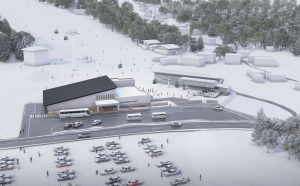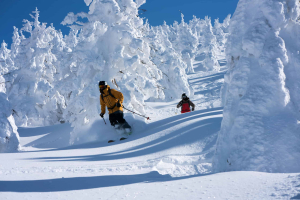The Hakkoda Mountains: Where Backcountry Skiing Encounters The Essence of Japan
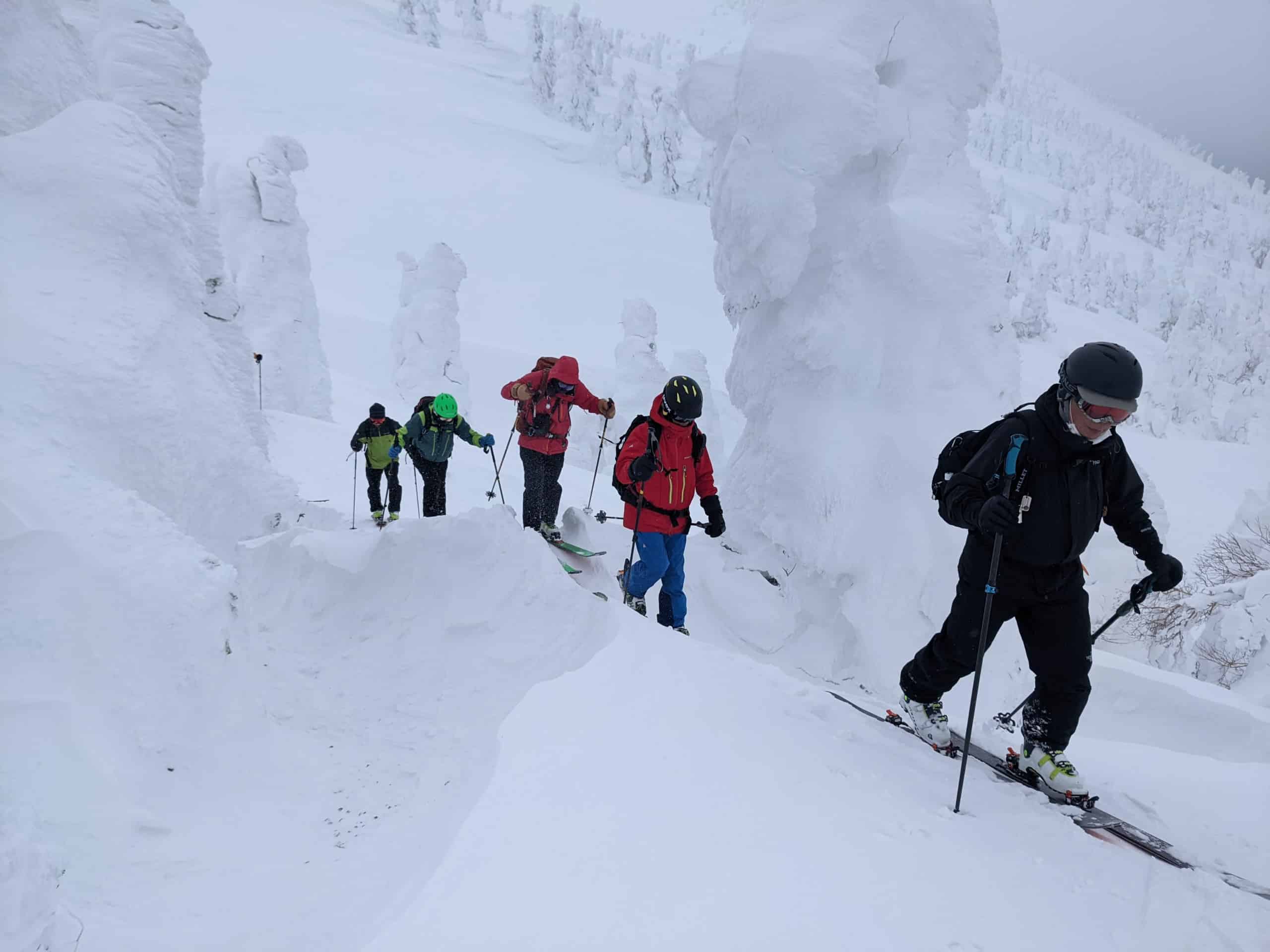
Mountainwatch | Nadine Robb
Long since hailed as a powder capital of the world, Japan’s ski culture is unlike any other. Aomori prefecture stretches across the upper portion of Honshu – the nation’s largest island – and draws together some of Japan’s most iconic indulgences. Cradled by the Sea of Japan, the Tsugaru Strait and the Pacific Ocean, its proximity to these large bodies of water captures moisture in the air, while the cold temperatures accredited to its northerly latitude and Siberian driven winds formulate the snowstorms that swirl over Aomori during the winter months.
To greet these snow spilling weather systems are the Hakkoda Mountains. An active volcano complex that stretches 1584 metres from sea to summit, Hakkoda is set slightly inland, taking approximately one hour by car from the prefectural capital of Aomori city. The snaking approach road carves deeper into the volcanic topography with each turn, swelling the overshadowing snow walls until they reach bus-dwarfing heights.
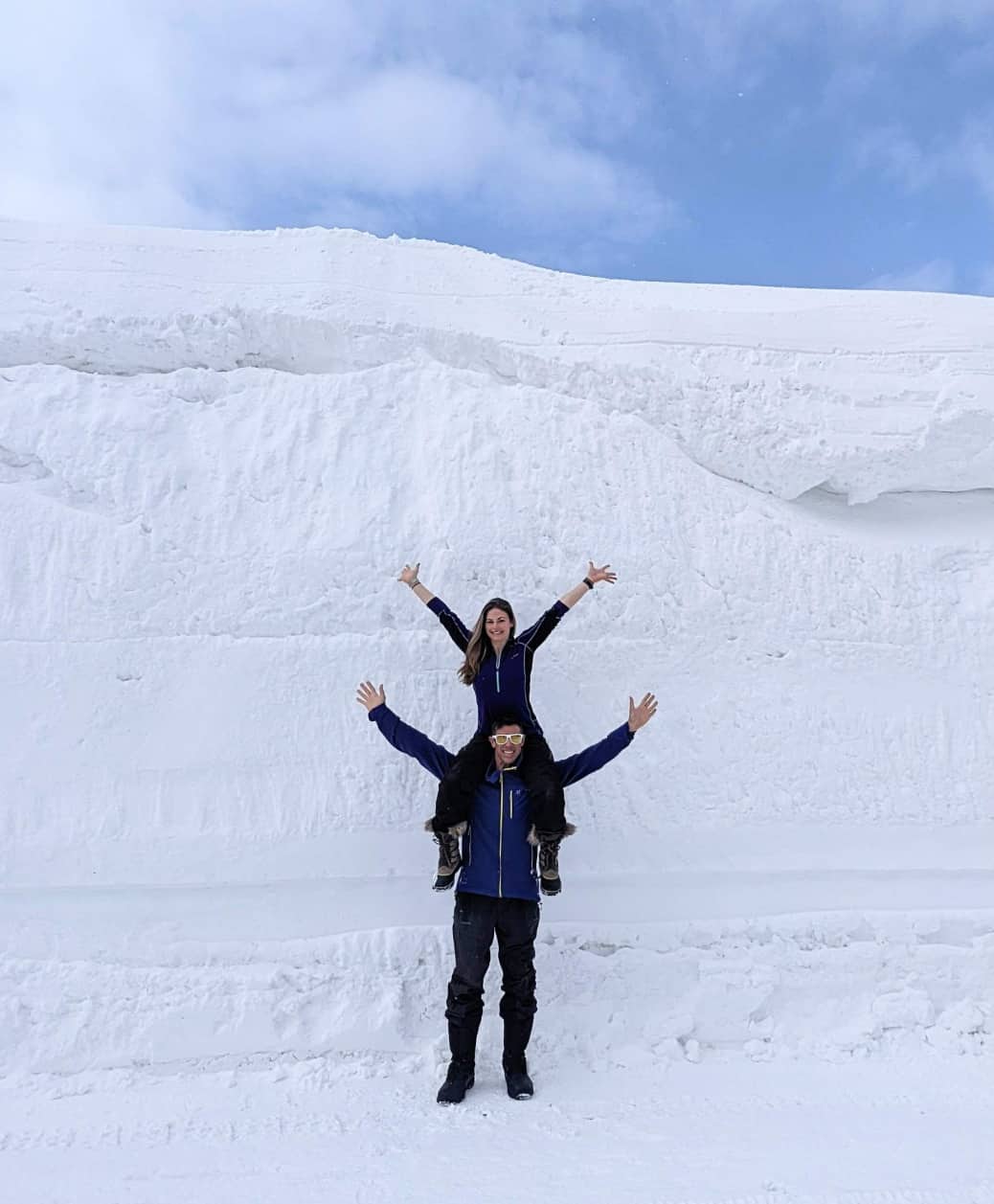
Most of Hakkoda’s landscape is unblemished and unadulterated – free of the tourist-driven development that is demanded of most ski resorts around the world. With fewer accommodation options and a lack of overt commercial infrastructure, the sense of raw mountain immersion is real.
Nestled in the folds of the mountain’s feet is quaint Hotel Jogakura. As a hat tip to the European mountaineers of yesteryear, the white walls and warm wood finishes are reminiscent of an Austrian ski lodge, while the food, hot springs and service are every bit Japan. The appointment and ambience are more nostalgic than neoteric, but the comfort and cosiness reflected throughout to create an idyllic backdrop for any ski trip.
With the ocean so close by, the evening and breakfast menus showcase Aomori’s best seafood; always fresh, well paired and beautifully presented. A soothing soak in the hotel’s onsen (hot spring) is the perfect way to start and finish a day in snow country, and the high mineral content is said to have healing properties.
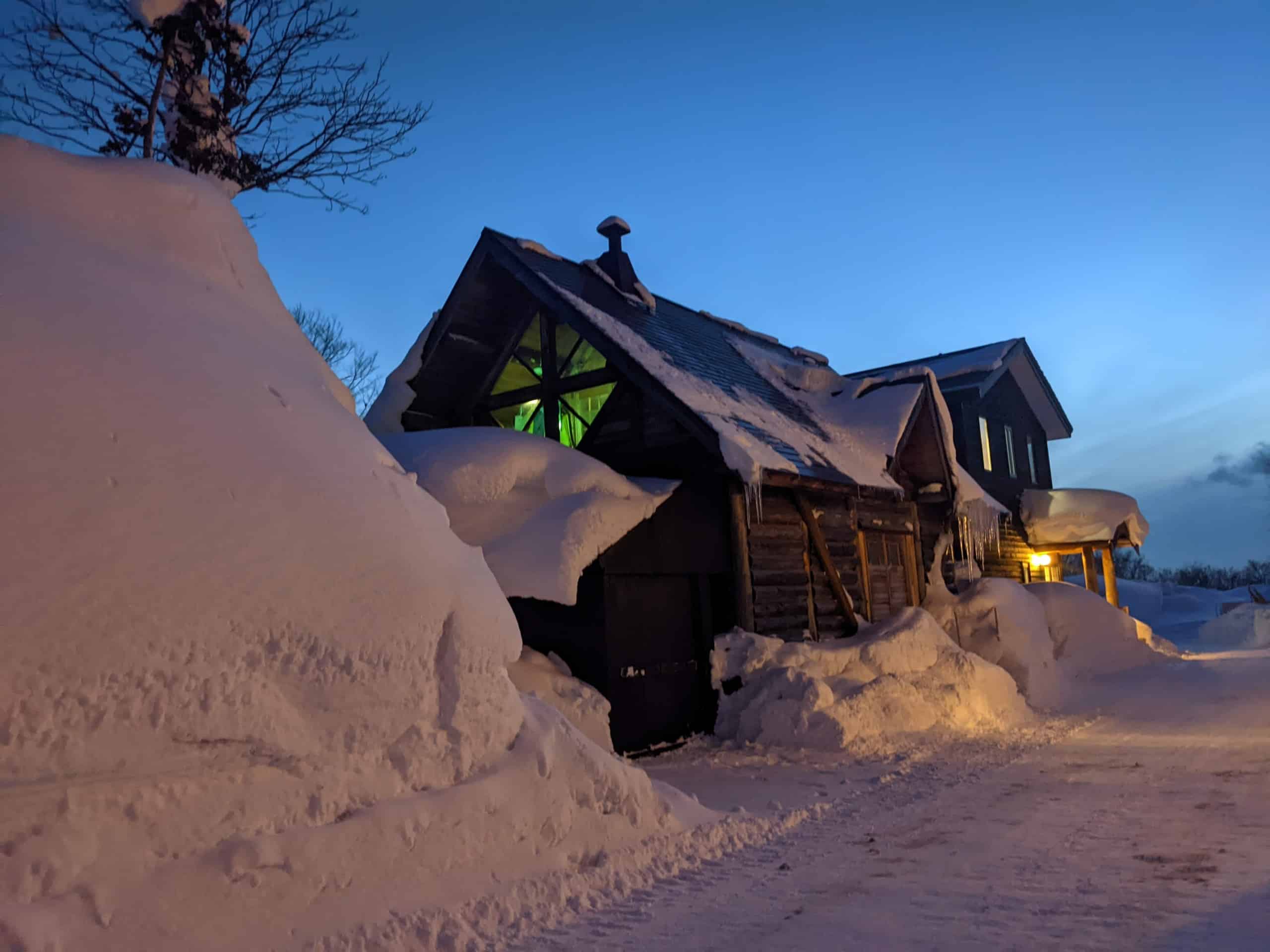
Since Hakkoda is a well-known backcountry destination the hotel offers an in-house guiding service as well as a small space in which you can rent backcountry touring equipment. A few kilometres away at the base of the ski area is Mount Hakkoda Guide Club – another option for guided tours, with an extensive line-up of current and well cared for backcountry rentals. Far from being a conventional ski resort, the main draw to Hakkoda is its ropeway, a large cable car that pulls you to the summit – sheltered and protected from the frequent blizzards that rage outside. Stepping out at the top is like stepping into another world, one where the fondly coined “snow monsters” preside and the tree wells yawn like sinkholes.
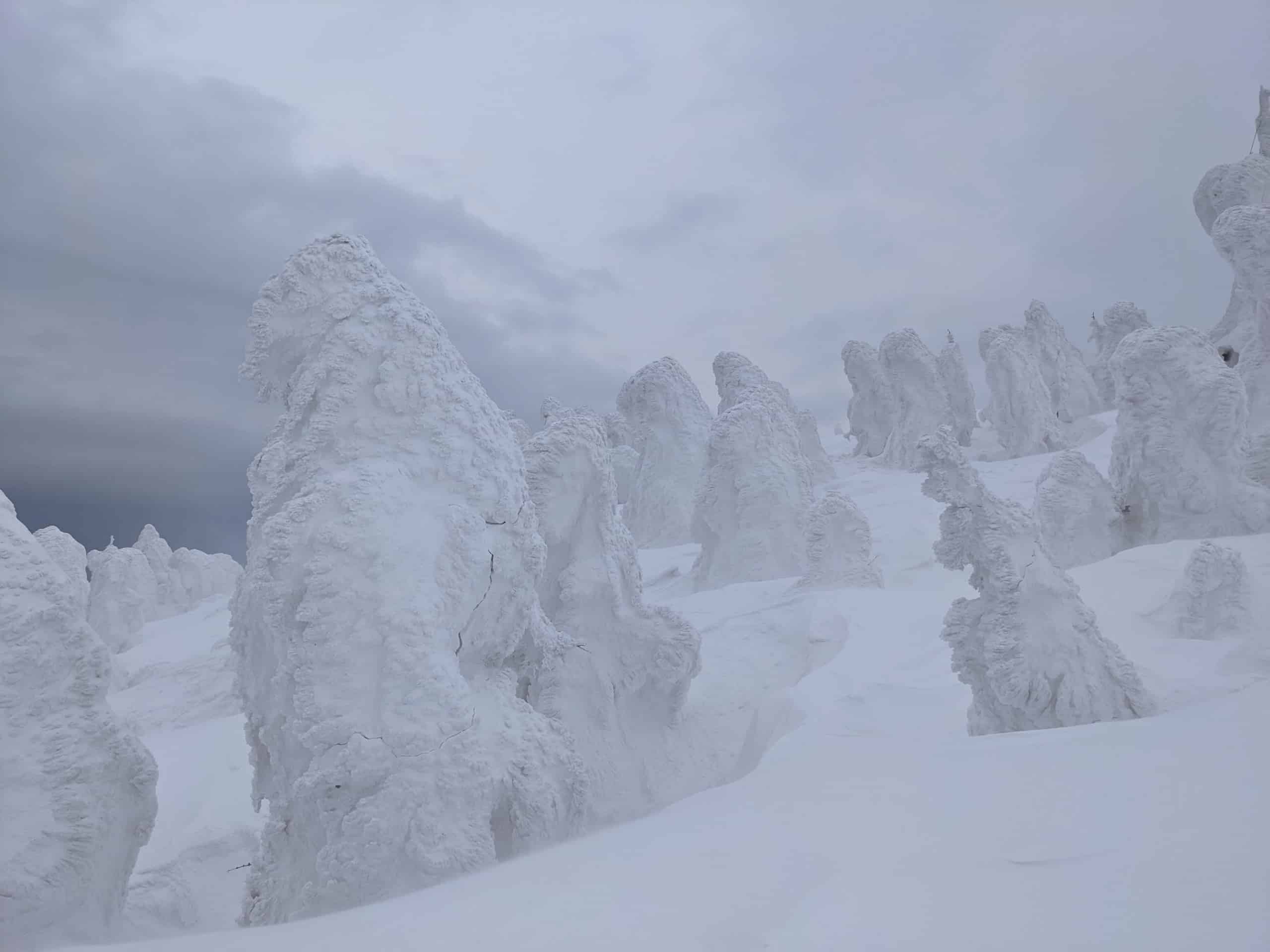
As a standalone stratovolcano complex close to the ocean, Hakkoda is no stranger to strong winds. When the crystallised vapour is blasted against the hardy summit-surviving trees, it clings to their limbs – thickening as the cycle repeats – until “snow monsters” are birthed. Void of any trace of the trees entombed beneath their snowy sheaths, the monsters loom, larger than life, as skiers and snowboarders pioneer their paths between them.
Descending on the “front side” of Hakkoda – closer to the ropeway – often delivers deep snow and long, playful lines. Entirely un-groomed and fully off-piste, there are loosely marked routes that feedback to the base of the ropeway. For those experienced and knowledgeable in off-piste travel, these can be navigated with somewhat ease, and the generous volume of terrain makes finding fresh tracks an almost certainty for most days. Do note though that there are terrain traps in the mountain’s creases – including but not limited to creeks and natural depressions – and the sometimes-volatile weather can disorientate even the most experienced of skier. While there are topographical maps readily and freely available at the base area, do engage the services of a professional guide if you are at all unsure.
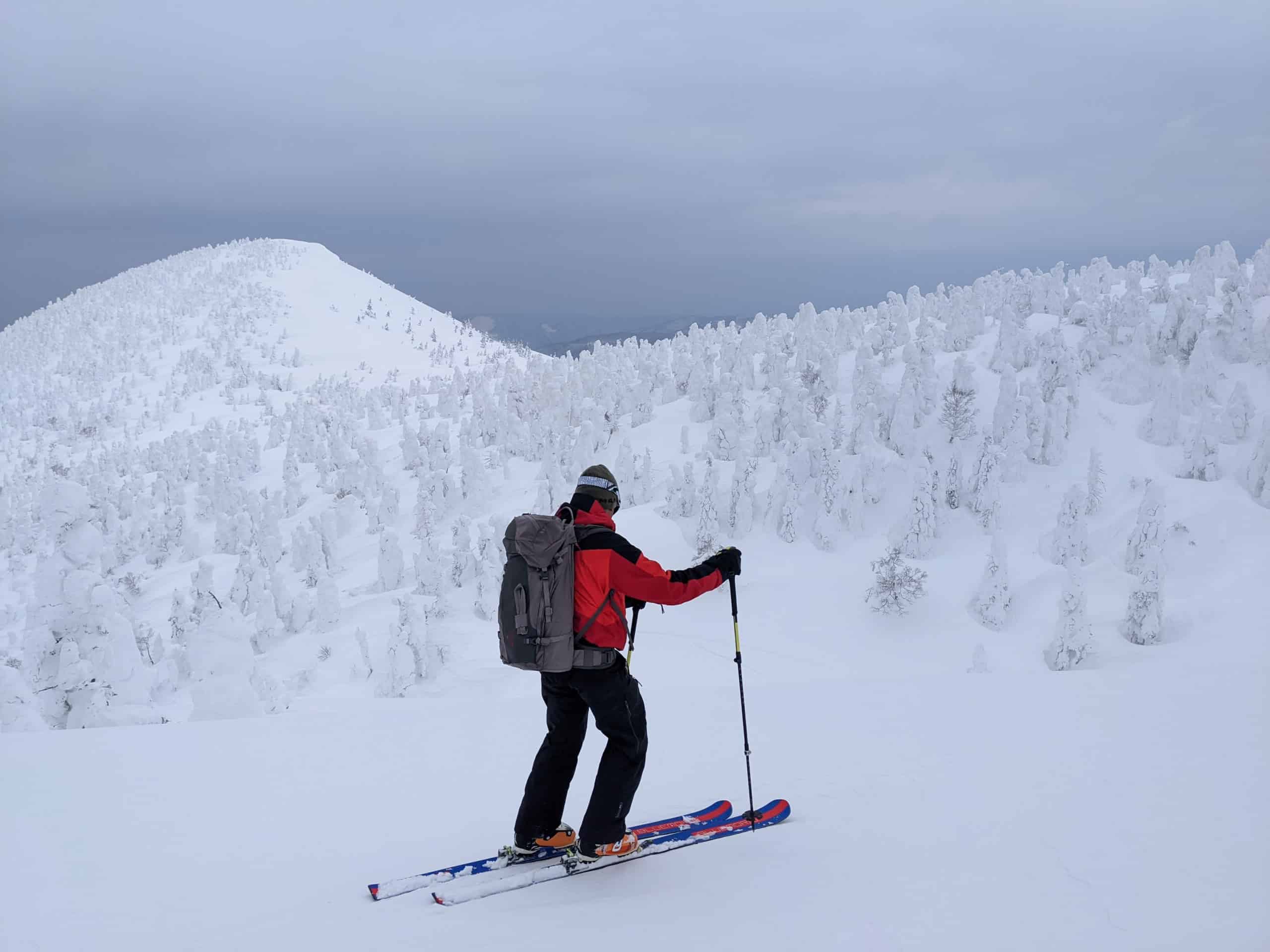
As for the rest of Hakkoda’s sprawl? It is almost limitless. Touring skis and skins will allow you to embark on seemingly infinite adventures, on almost every aspect, on every peak, and across kilometres of backcountry terrain. With your back to the ropeway summit station, an expanse of skiable lines lie in wait. While the majority of terrain would be classed as “simple” on the Avalanche Terrain Exposure Scale, there are pockets of “challenging terrain” on certain aspects, and the length of the descents are hard to reckon with.
With the Hakkoda ring road ready to scoop you up after each lap, vast distances can be covered in a day, and those settling in for multiple days can find new playgrounds daily. The consistent and low angled nature of the swooping slopes are fitting for those looking to depart the groomers and progress beyond the resort boundaries, creating an approachable and non-threatening way to engage in big mountain skiing. The trees that dot much of the topography are widely spaced and framed by large wind lips, providing an excellent introduction to tree skiing. So often backcountry skiing demands a high level of technical riding, making Hakkoda unique in its ease of access.
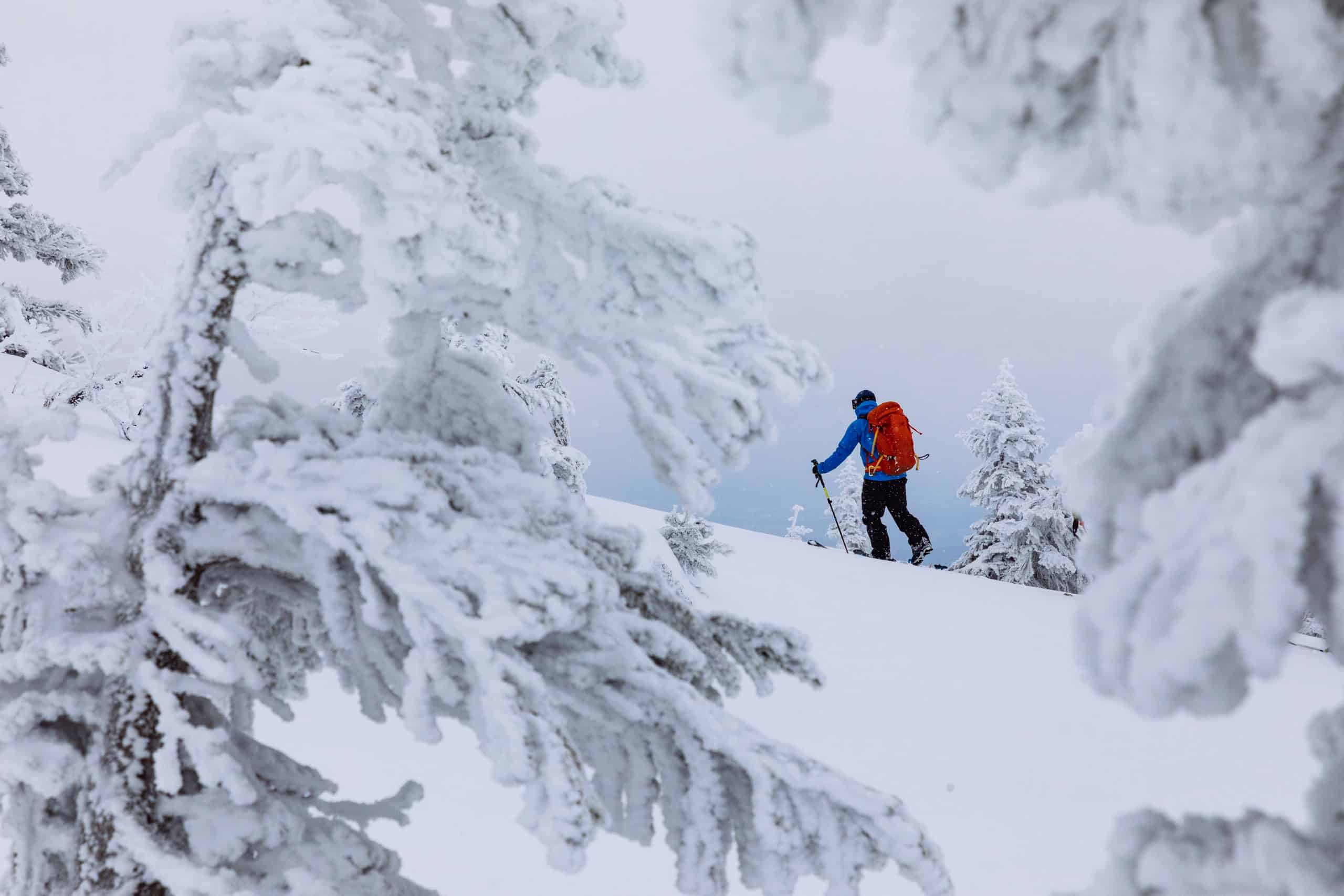
As well as the pursuit of entry-level off-piste and backcountry riding, Hakkoda holds other points of difference. Though the abundance of deep powder snow is “attarimai” (goes without saying) for the region during the winter, fitness fanatics will embrace the mileage that can be clocked in a day, and the feeling of big mountain travel with few overhead dangers. Come springtime when trail breaking is easier, multiple peaks can be gained in one day. With the kinder springtime climate often come blue skies, seamlessly spanning the horizon before meeting the sea.
Deeper still than the merits of snow quality, vast terrain and approachable ski touring – is the overwhelming spirit of Japan that one finds in Hakkoda. Not yet overwhelmed with international enterprise and a conveyor belt of seasonal staff, Hakkoda has held on to its heritage and legacy, ever evident through the locals that live, work and breathe the mountains. Captured by a magic that could be overlooked, many of the guides have shared Hakkoda’s secrets with visitors for decades – comfortably guiding into their 60s and 70s, not yet ready to move on or detach from its draw. In turn, many patrons return year after year, renewing themselves in the transformative power of the mountains.
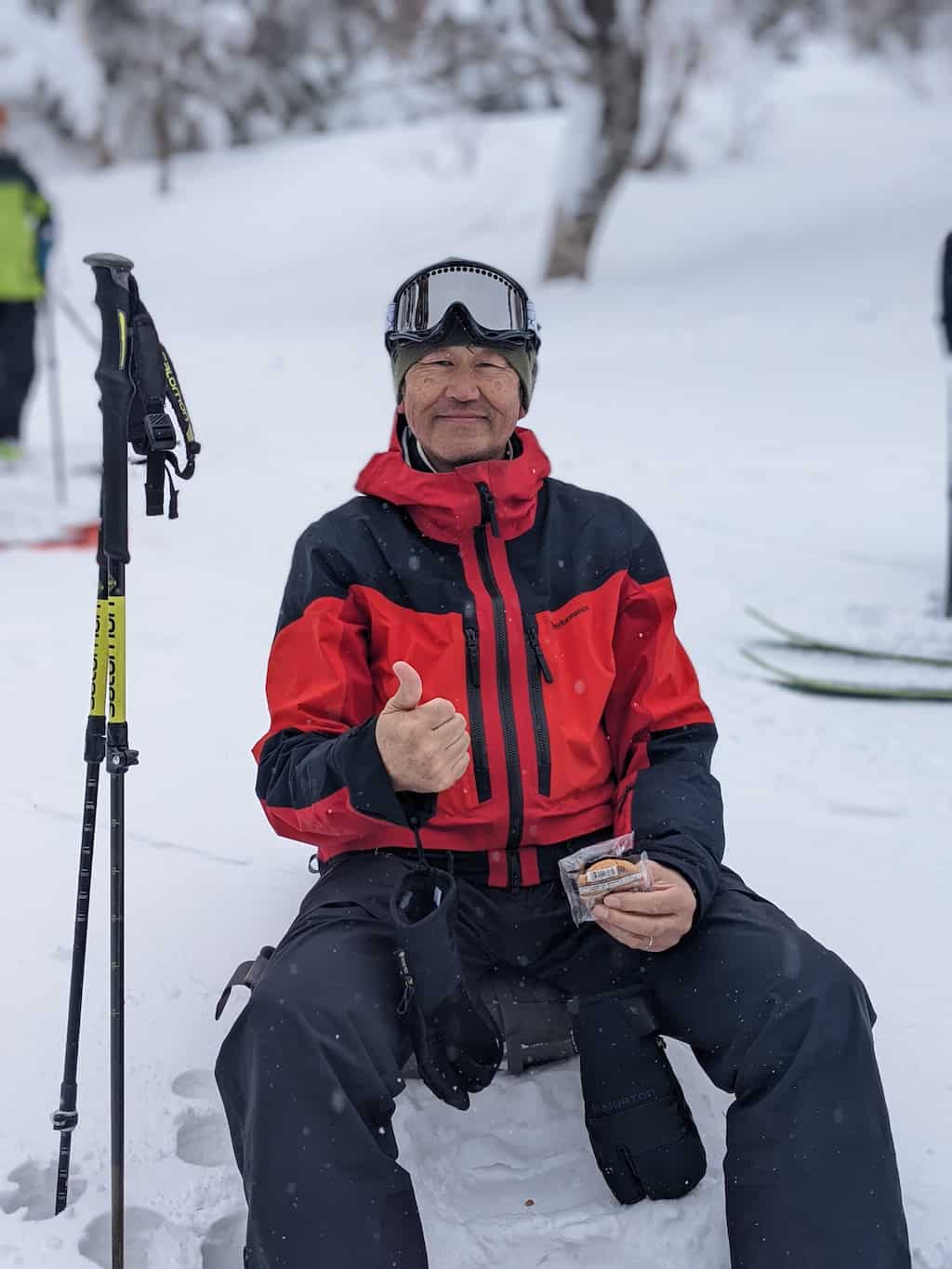
At 62 years of age Satoru Terashima – guide for the day on my most recent Hakkoda adventure – was excellent, not limiting his insight or knowledge of the region to the snow conditions or recommended lines. Even more impressive were my tour companions, a group of six gentlemen from Osaka, all of whom were older than Terashima San – including 81-year-old Osanai San: a refreshingly real glimpse into Japan’s backcountry past, present, and the people propelling it into its unchartered future.


